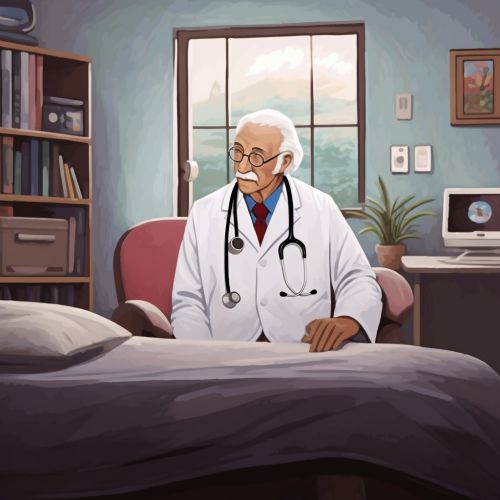Sleep Apnea
Overview
Sleep apnea is a serious and common sleep disorder that occurs when a person's breathing is interrupted during sleep. People with untreated sleep apnea stop breathing repeatedly during their sleep, sometimes hundreds of times. This means the brain -- and the rest of the body -- may not get enough oxygen Oxygen.
Types of Sleep Apnea
There are two types of sleep apnea:
Obstructive Sleep Apnea (OSA)


This is the more common form of apnea, caused by a blockage of the airway, usually when the soft tissue in the back of the throat collapses during sleep.
Central Sleep Apnea
Unlike OSA, the airway is not blocked, but the brain fails to signal the muscles to breathe, due to instability in the respiratory control center.
Symptoms of Sleep Apnea
Sleep apnea can be characterized by loud snoring followed by periods of silence when breathing stops or nearly stops. Other common symptoms include excessive daytime sleepiness, gasping or choking during sleep, non-refreshing sleep, and difficulty concentrating.
Risk Factors
Certain factors increase the risk of developing sleep apnea. These include:
- Excess weight: Obesity greatly increases the risk of sleep apnea. Fat deposits around the upper airway can obstruct the breathing.
- Neck circumference: People with thicker necks might have narrower airways.
- A narrowed airway: You might have inherited a narrow throat. Or, your tonsils or adenoids may become enlarged, which can block the airway.
- Being male: Men are two to three times more likely to have sleep apnea than women. However, women increase their risk if they're overweight, and their risk also appears to rise after menopause.
- Age: Sleep apnea occurs significantly more often in older adults.
- Family history: Having family members with sleep apnea might increase your risk.
- Use of alcohol, sedatives or tranquilizers: These substances relax the muscles in your throat, worsening obstructive sleep apnea.
- Smoking: Smokers are three times more likely to have obstructive sleep apnea than are people who've never smoked. Smoking can increase the amount of inflammation and fluid retention in the upper airway.
Diagnosis


Sleep apnea is usually diagnosed with a study of your sleep (a sleep study) at a sleep disorder center. Your heart, lung and brain activity, breathing patterns, arm and leg movements, and blood oxygen levels will be monitored during the study.
Treatment
Treatment for sleep apnea is necessary to prevent complications, including:
- Daytime fatigue and sleepiness
- Cardiovascular problems
- Complications with medications and surgery
- Eye problems
- Sleep-deprived partners
Treatments for sleep apnea include lifestyle changes, mouthpieces, breathing devices, and surgery.
